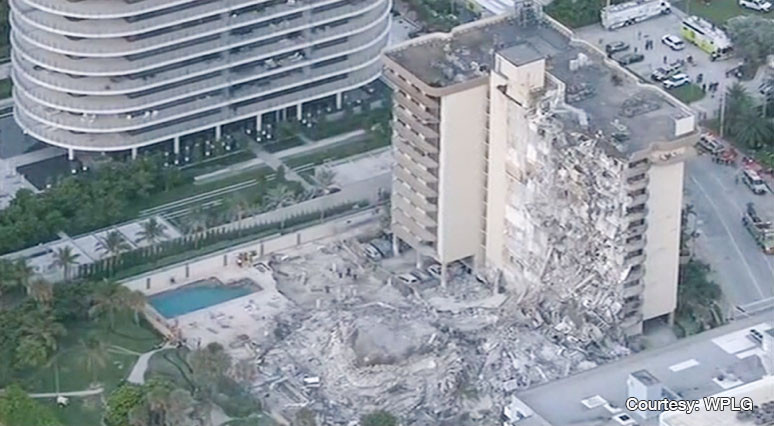When we arrived at the scene of the ruined condominium in Surfside, Florida, about 20 hours after the collapse, we were greeted by heavy downpours from sporadic thunderstorms. As media members and neighbors gathered a block away, rescue workers carried out a desperate search for survivors. We could see from the distance a number of emergency personnel carefully climbing up and down piles of debris.
Neighbors stood quietly, staring at the damaged building. One told me that a friend from Argentina owned a unit in the condo and had lost everything. Heavy equipment and fresh crews arrived throughout the night and into the second day. The smell of smoke from the smoldering ruins enveloped the area from the early hours. Rescuers were forced to pause their hunt for survivors while they fought to extinguish the fire.
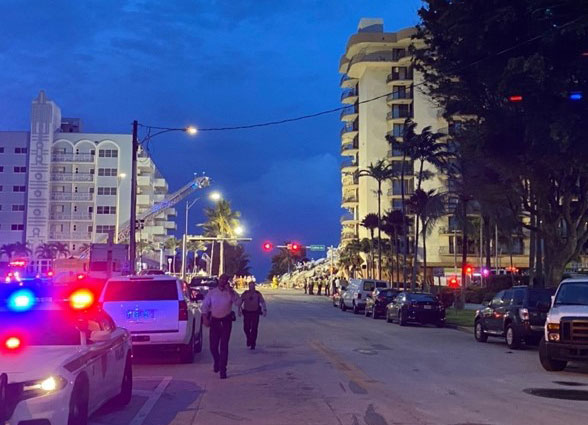
The Champlain Towers South, located just a few miles north of world-famous Miami Beach, partially collapsed around 1:20 a.m. on June 24, killing at least 98 people. A security camera in an adjacent building captured the moment. It showed a portion of the 12-story building falling in seconds and a plume of dust rising. Fifty-five of the building's 136 units were lost. At dawn, a clearer picture of the destruction emerged; one side of the complex was completely leveled and only a mound concrete rubble remained.
A survivor's tale
One of the survivors, Raysa Rodriguez, lived in a unit on the condominium's ninth floor. It was her dream to retire near the beach, and she was almost finished with her mortgage payments. When the building collapsed, she was sleeping.
"Something woke me up and I found myself in the middle of the room," she recalled in a legal statement. "The building swayed like a sheet of paper. I don't know if I jumped out of bed or how I got there. I ran through my apartment and out to the hallway. I looked left to the north end of the building. A concrete column had pierced the hallway from floor to ceiling. I looked at the elevators. The elevator shafts were exposed, the doors were gone."
She eventually made her way down the stairs with a few neighbors and escaped through a second-floor balcony.
Along with others, Rodrigues filed a class action lawsuit against the Champlain Towers South Condominium Association, which oversaw the building. Their suit, and others filed by residents and victims' families, are being consolidated into a single class action lawsuit, according to the Miami-Dade Circuit Court. Authorities have also launched a grand jury investigation into the collapse.
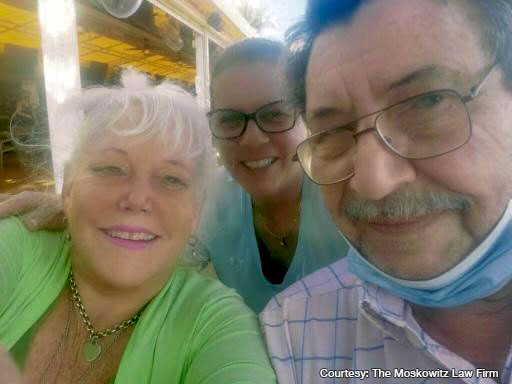
Close-knit families and a community torn apart
Adriana Lafont lost her ex-husband, Manny, who was living in a unit on the eighth floor when the building crashed to the ground.
"That day started with a phone call at 3 in the morning from my sister-in-law," Adriana recalls.
The sister-in-law, who lives in Canada, saw the news and contacted Adriana to ask where they were. She and Manny's two children, 10-year old Santi and 13-year-old Mia, live with Adriana, but they visited their father every week at the condo since their parents' divorce.
"She just asked me very [scared], 'Where are the kids?' So I turned my head and I saw Santi next to me. I knew Mia was in her room. This is a miracle. I have my two kids with me."
Manny owned the condo for over two decades. During their marriage, Adriana lived there for 11 years.
"Neighbors, our friends, so many people lost their life. People that we used to see every day," she says. "Same people used to live there for many years. Manny was there for 22 years. So he knew everybody, I knew in 11 years everybody. I lost many people, too, good friends. I feel this emptiness in my life, in my feelings, in my heart. It's almost physical. Of course, I miss Manny."
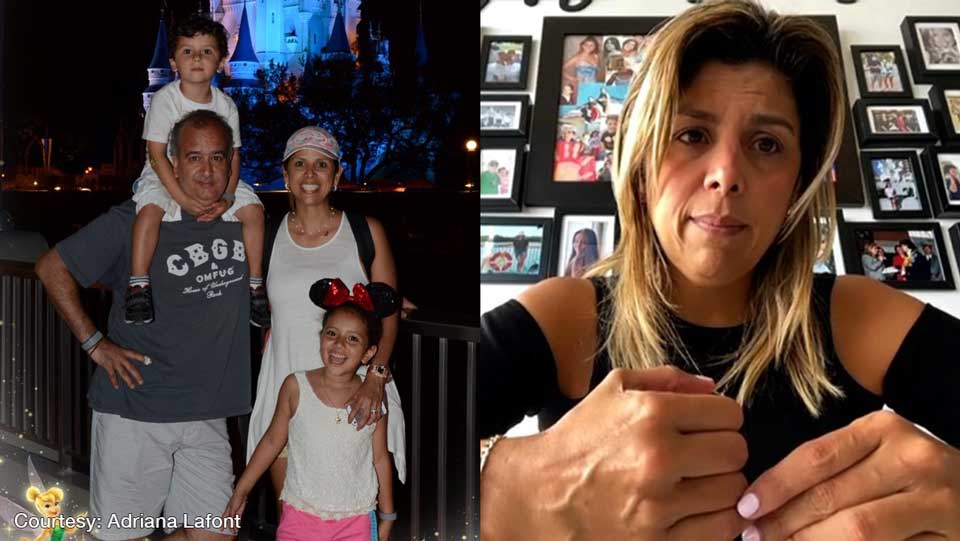
Adriana Lafont recalls the night of the tragedy.
Rescue operation turns to recovery
Rescue workers searched for survivors day and night for two weeks. They looked for pockets in the debris where someone might be trapped alive. Fires and torrential rain hampered the operation. The portion of the building still standing also posed a risk. Threatened by an approaching tropical storm, authorities made the decision to bring down the remains of the structure in a controlled demolition. It was razed on July 4.
On July 7, officials made the difficult decision to abandon the search for survivors and transition to a recovery operation.
"At this point, we have truly exhausted every option available to us in the search-and-rescue mission," said Miami-Dade Mayor Daniella Levine Cava.
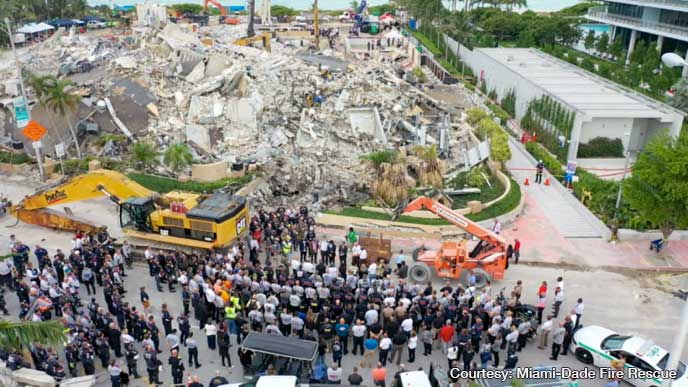
A small miracle
One small miracle occurred two days later. A cat named Binx, which lived with a family in a unit on the ninth floor, was found by a neighbor roaming near the building site.
"I'm a little bit relieved and shocked, honestly," said the cat's owner, Taylor Gonzales, in a video released by Miami-Dade Fire Rescue. "It's just been, again, a very long journey in the last two weeks, so I'm happy."
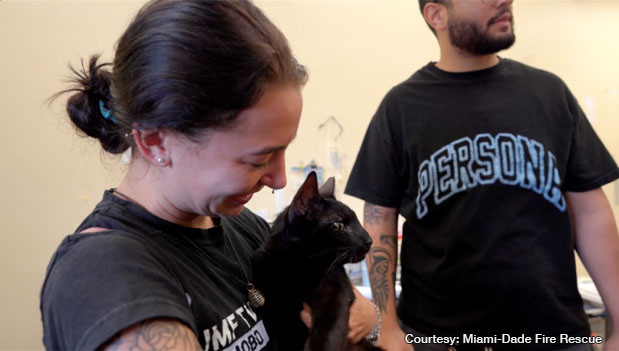
Looking for answers
With recovery operations in their final stage, authorities are turning their focus to a search for answers. The collapse was so catastrophic that a federal investigation was launched by the National Institute of Standards and Technology (NIST). The group has a long track record of investigating building failures and other disasters, including the attack on the Pentagon and the collapse of the World Trade Center in 2001.
NIST investigators, structural engineers, and forensic scientists are combing through the rubble to find clues. According to authorities, over 26 million pounds of debris has been removed and more than 200 pieces of evidence collected.
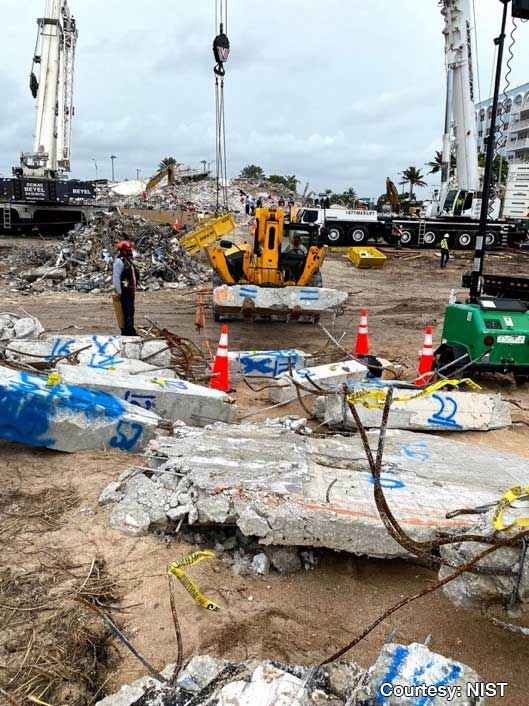
Expert predicts lengthy investigation
"My first reaction was 'How unusual,' because it's not a common thing that happens, buildings don't just fall," says Hanif Kara, a structural engineer and professor at Harvard University's Graduate School of Design. "When you see something like this, you have to assume that there were a multiple series of problems that all compounded on this one terrible evening."
Kara says the security camera video gives some clues as to what may have happened.
"In the US, they call it a 'pancake collapse'. We call it disproportionate collapse or progressive collapse," Kara said. "A local failure is the cause of that. Something small breaks and then that compounds as it moves the force to the next part. And then the next part; it compounds the problem progressively. And then you get a large-scale, progressive collapse."
From his experience examining building materials, Kara warns of the danger posed by natural elements, like salt and water, to aging concrete structures. He also stresses the importance of close monitoring and inspections.
"What we're doing in buildings now, because of the power of computation and computers, is installing sensors that can allow us remote examining," he says. "You don't have to wait 40 years; we're watching them as we're building them. We're watching them as they're used. We're watching them as a new wind hits it. These things have become possible because of technology. They're now economical."
Having studied similar building collapses, Kara predicts a thorough investigation will take years. He expects it to result in a review of regulations and a modification of building codes.
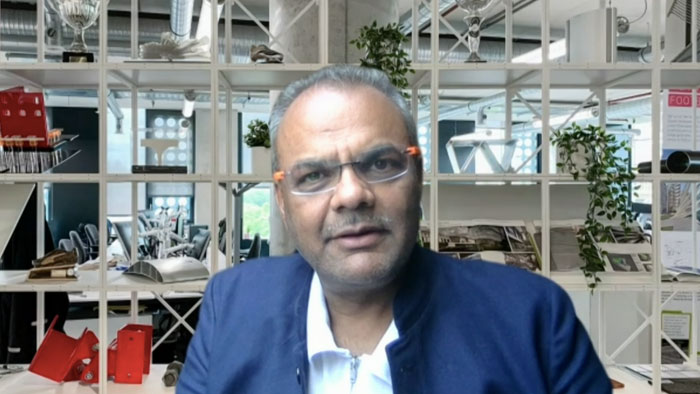
As recovery ends, pain and questions remain
Most of the debris from the site has now been cleared. And, just over one month since the collapse, authorities said that they had identified the last of the missing victims.
"It really means the world to be able to have closure for all of those who were seeking their loved ones," said Mayor Levine Cava. "Buildings should not fall down. So that is obviously something quite unacceptable and we are going to do everything in our power to make sure it does not happen."
A Florida judge has awarded at least $150 million in initial compensation to victims and families of those lost in the collapse. That includes $50 million from insurance on the building and $100 million in proceeds from the sale of the property where the condominium once stood.
Though the recovery operation has ended and the dust on the ground has settled, the pain felt by those who lost loved ones remains. How and why could this disaster have happened in this day and age? That question, too, will remain for months and years to come.
